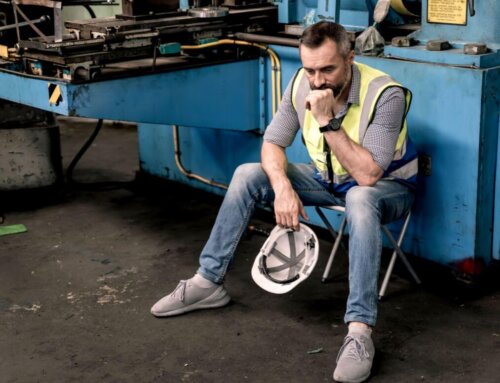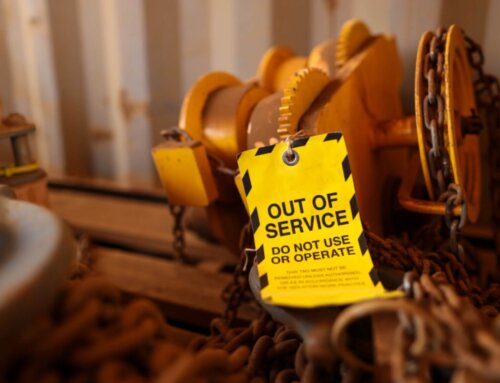The most recent Health and Safety Executive (HSE) statistics regarding workplace accidents and injuries make for a grim reading. During the year 2022/2023, there were:
- 561,000 cases of self-reported non-fatal work-related injuries
- 60,645 cases of non-fatal injuries to workers reported by employers
- 135 fatal injuries in the workplace
Put into context, this means that almost 12,000 UK employees suffered workplace injuries every week last year. The knock-on effects for both employees and employers can be huge.
Understanding the Importance of Workplace Safety
Injured employees endure pain, suffering, and often loss of earnings. By law, employers are only obliged to pay statutory sick pay to employees who cannot work due to accident or illness. So, injured workers can find themselves in financial difficulties while also having to deal with the effects of their injuries. They end up with injuries that are both physical and mental.
Employers who lose a member of their workforce due to a work accident must pay sick pay to the injured worker for up to 28 weeks. Sometimes, they may also have to pay for a temporary replacement for their injured employee, especially if the injuries are severe. In 2022/2023, approximately 35 million work days were lost due to self-reported work-related ill health or injury
If the employee brings an accident at work compensation claim against the company, the employer’s liability insurance will pay the compensation if the claim is successful. However, in the future, the employer will pay higher insurance premiums. The employer could also suffer damage to its reputation if the accident receives publicity in the press.
Companies with bad health and safety records tend to have a lot of workplace accidents. This can make employees lose motivation and productivity drop.
Workplace accidents can have legal ramifications for employers. HSE will investigate serious accidents in which workers suffer bad injuries. If they deem the employer’s breach of duty of care serious enough, they will prosecute the business.
Successful prosecutions can lead to the employer receiving hefty fines. HSE prosecutions can lead to owners and managers going to jail.
Legal Framework and Employer Responsibilities
Under English Law, employers owe a duty of care to their employees to keep them safe at work. Employers must do all they reasonably can to protect the health and safety of employees in the workplace or other places where they carry out their duties (i.e. offsite or whilst on the road). This is a duty under Common Law or precedent.
In addition to the Common Law duty of care, there is plenty of Government legislation on the duty to protect employees, some of which is specific to certain types of work, e.g., The Work at Height Regulations 2005. Others have a more general application to workplaces, such as the Health and Safety at Work etc., Act 1974.
Employers must demonstrate reasonable skill and care in four specific areas to meet the common law duty of care.
These four areas require employers to:
- Employ competent staff so that workers can rely on each other to perform their tasks diligently and competently. Incompetent or poorly trained workers put their colleagues in danger of accidents by their carelessness.
- Make sure they provide suitable plant and equipment for employees to use at work. Plant includes items like ladders, machinery, tools, chairs, and tables. These items are essential for employees to perform their tasks effectively.
- Adopt a safe system of work
If employees are to be kept free from harm whilst doing their jobs, it’s important that employers plan, devise and adopt a safe system of doing the work.
To develop a safe system of work, an employer will need to take these five steps:
a) Carry out a detailed assessment of what tasks the system of work will cover, noting the plant and equipment to be used, the sources of possible errors, where the task will take place and how the task is put into effect.
b) Conduct a suitable and thorough risk assessment. A properly conducted risk assessment will aim to:
-
- Identify potential causes of injury or illness
- Evaluate the likelihood of injury occurring under the current method of working
- Put in place additional safety measures as necessary to minimise the risk as much as possible.
c) Define Safe Methods, with each different task needing a different safe system of working, depending on the level of risk associated with carrying it out.
d) Implement an effective Safe System of work
For a safe system to work It’s imperative that it’s made clear what the system is, how it operates, with employees left in no doubt that the system is to be strictly followed at all times.
e) Monitoring
Effective monitoring of the system involves checking that the safe system is followed at all times and every time this type of work is carried out.
4. Provide safe premises (for employees to work in)
To help employers manage the health and safety of their workforce, the aptly named Management of Health and Safety at Work Regulations 1999 sets out a series of measures employers must adhere to. The HSE website also contains plenty of advice to help employers keep their employees safe at work.
Below is a summary of the steps employers should take to comply with the requirements set out by work-related legislation and the common law doctrine of ‘duty of care’:
- Undertake a suitable and sufficient risk assessment of the risks to the health and safety of his employees to which they are exposed whilst at work.
- Having carried out the risk assessment and identified possible risks, steps must be taken to eliminate or lessen the risks identified.
- Carry out regular reviews of the preventative and protective measures implemented as a result of the risk assessment.
- Carry out health surveillance measures on employees who may be affected where potential risks have been identified.
- Appoint qualified auditors to help the employer to comply with statutory safety provisions
- Provide employees with suitable training.
- Create a health and safety policy.
- Provide employees with comprehensive health and safety training relevant to their roles and the hazards they may encounter.
- Implement control measures to mitigate the identified risks, such as providing PPE, implementing safe working procedures, and ensuring adequate ventilation in work areas.
- Consult and involve employees, by inviting them to provide their input on health and safety matters, encouraging them to report hazards and contribute to the development of safe working practices.
- Provide employees with access to relevant health and safety information
- Stay informed about and comply with all relevant safety legislation.
In general, the employer is primarily responsible for maintaining a safe workplace. However, are there any rules that employees must comply with?
What obligations are there on employees in relation to health and safety at work?
Regulation 14 of the ‘Management of Health and Safety at Work Regulations 1999’ provides that:
- Every employee shall use any equipment provided to them by their employer in accordance with the training and instructions provided by the employer in compliance with the requirements and prohibitions imposed on the employer by virtue of relevant statutory provisions.
- Employees are under a duty to inform their employer of a work situation which the employee believes represents a serious and immediate danger to health and safety and of any matter which the employee considers a shortcoming in the employer’s protection arrangements for health and safety.
Empowering Employees for Safety
The primary onus is on employers to keep their workforce safe in the workplace, and that will always remain the case. There are far less legal obligations on employees preventing accidents in the workplace.
The statistics outlined at the start of this article prove that the current status quo is not working effectively enough.
Drastically reducing the number of accidents at work will not happen overnight. Yet, the tools to start the process are already available to employers and employees. However, they need to be willing to work together if the number of accidents are to be reduced and employers need to embrace their employees as partners on safety issues.
Fostering a Culture of Safety
Similar phrases appear repeatedly in HSE prosecution judgments:
“They have not, so far as is reasonably practicable, taken suitable and sufficient measures to prevent a person falling a distance liable to cause personal injury”
“There was no formal training or supervision given to employees.”
“Failure to provide suitable and sufficient precautions to prevent a fall.”
“Failed to take suitable and sufficient steps to prevent so far as reasonably practicable the risk of injury.”
“Failure to adequately assess the risk.”
“Unsafe work at height that was neither properly planned, nor appropriately supervised.”
“Failure to provide a risk assessment or safe system of work.”
For some businesses, the prevailing culture appears to be ‘getting the job done at all costs’ and so they cut corners, cut back on safety measures and thereby put their employees in danger.
Instead, if businesses were to adopt a culture of ‘Safety First’ i.e. a commitment to maintaining a safe work environment, could we start to see a shift in mindset that, in turn, ultimately leads to a reduction in the number of accident at work?
To achieve that, we would need to see:
- Employers committing to put the safety of their employees first in deeds as well as
- Providing recognition and reward for safe behaviour
- A commitment to continuous improvement through feedback and learning from past incident
- Encouraging employees to speak up about safety concerns and suggestions for improvement and taking action when needed.”
- Involving employees in safety planning and the decision-making process.
One thing is for sure, “If nothing changes, nothing changes.”
If you have had an accident at work and would like advice for what to do next, contact our personal injury team at Mooneerams. Call 029 2048 3615 or email enquiries@mooneerams.com









